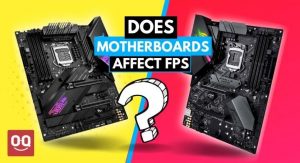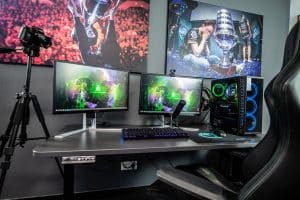As technology advances and high-resolution displays become more commonplace, navigating the world of display interfaces can be a daunting task. With numerous display interface standards available, such as HDMI, DisplayPort, VGA, and DVI, understanding their unique features, advantages, and limitations is essential for informed decision-making. Whether you’re looking to optimize your home theater, gaming setup, or professional workspace, choosing the right display interface can significantly impact your user experience.
In this comprehensive guide, we delve into the intricacies of the most commonly used display interfaces for electronics and computer accessories. We’ll explore the history and evolution of HDMI, DisplayPort, VGA, and DVI interfaces, highlighting their distinct features and the best use cases for each. Leveraging echnoQia’s educational and informative content, you’ll learn which interface is ideal for your specific needs, taking into account factors like resolution, refresh rate, compatibility, and the type of content you intend to display.
1. Display Interfaces: Evolution and Types
Over time, display interfaces have evolved to meet the growing demands of high-resolution displays and bandwidth requirements. While some interfaces have become obsolete, others remain relevant to ensure compatibility with various devices and use cases. The four major types of display interfaces are:
– HDMI (High-Definition Multimedia Interface)
– DisplayPort
– VGA (Video Graphics Array)
– DVI (Digital Visual Interface)
Each interface has distinguishing features, advantages, and limitations. Let’s explore them in detail to determine the best choice for your specific needs.
2. HDMI: Unifying Audio and Visual
HDMI has quickly become the go-to standard for modern audio-visual setups, gaming consoles, and home theaters. This interface boasts several advantages over competing types:
– Single Cable Solution: HDMI simplifies cable management by combining audio and video signals into a single cable, eliminating the need for separate audio connections.
– High-Definition Content: HDMI supports full HD (1080p) and 4K (2160p) resolutions, making it ideal for high-definition content and modern displays.
– Audio Formats: HDMI is compatible with a wide range of audio formats, including multi-channel audio, lossless audio (such as Dolby TrueHD and DTS-HD Master Audio), and immersive audio formats like Dolby Atmos and DTS:X.
– Copy Protection: HDMI’s HDCP (High-bandwidth Digital Content Protection) helps protect copyrighted content by preventing unauthorized copying or sharing.
However, HDMI comes with some limitations:
– Cable Length: HDMI cables have distance limitations, which can lead to signal degradation over longer cable runs. Users may require signal boosters or extenders to overcome this issue.
– Limited Refresh Rate Support: While capable of high resolutions, HDMI might not support high refresh rates (120Hz or 144Hz) on some devices, making it less ideal for high-refresh-rate gaming.
3. DisplayPort: Powering Professional Setups
DisplayPort has gained popularity as a reliable interface, particularly for computer monitors and professional applications. This interface offers unique advantages, such as:
– Higher Resolution and Refresh Rate Support: DisplayPort can handle higher resolutions (up to 8K) and refresh rates than HDMI, making it a popular choice for gaming and professional setups.
– Daisy Chaining: DisplayPort’s Multi-Stream Transport (MST) feature allows users to connect multiple monitors using a single DisplayPort output, simplifying cable management.
– Adaptive Sync: DisplayPort supports adaptive sync technologies like AMD FreeSync and NVIDIA G-Sync, providing smoother gaming experiences by reducing screen tearing and stutter.
DisplayPort also has some limitations:
– Limited Adoption: DisplayPort is less commonly found on consumer electronics, such as TVs and home theater systems, compared to HDMI.
– Lack of Copy Protection: DisplayPort doesn’t support HDCP copy protection, which can cause compatibility issues when connecting certain devices, like Blu-ray players.
4. VGA and DVI: The Resilient Veterans
While VGA and DVI interfaces are older and less prominent in modern setups, they still maintain relevance in select applications:
– VGA (Video Graphics Array): VGA is an analog interface that has been widely used in computer monitors, projectors, and certain TVs. Because it supports lower resolutions (up to 1080p) and doesn’t transmit audio, VGA is less ideal for modern high-definition displays. However, some legacy devices or applications may still require VGA connectivity.
– DVI (Digital Visual Interface): DVI interfaces exist in various types (DVI-A for analog signals, DVI-D for digital signals, and DVI-I for both). While DVI can support good resolutions, it lacks audio transmission and HDCP support, making it unsuitable for certain modern devices.
Choosing the Right Display Interface: Factors to Consider
Selecting the best display interface for your needs involves considering various factors, such as:
– Resolution and Refresh Rate: Ensure the chosen interface supports the desired resolution and refresh rate for your display. HDMI and DisplayPort are ideal for high-resolution setups, while VGA and DVI suffice for lower resolution requirements.
– Compatibility: Verify that the display interface is compatible with your devices. Consider adapters or converters if necessary for seamless connections.
– Audio Support: If you require a single cable solution for audio and video, opt for HDMI or DisplayPort over VGA or DVI.
– Cable Length and Management: Account for distance limitations of certain interfaces, like HDMI, and seek extenders if required. DisplayPort’s MST and HDMI’s combined audio and video signals simplify cable management.
Conclusion
Understanding the nuances of HDMI, DisplayPort, VGA, and DVI interfaces is key to creating an optimal viewing and user experience for your electronics and computer devices. By considering factors like resolution, compatibility, and content type, you can make well-informed decisions regarding the best display interface for your needs. This comprehensive guide, complete with expert information and unbeatable Amazon Affiliate deals, ensures TechnoQia readers have everything they need to decipher the display interface puzzle.
By staying informed and selecting the right display interface, you’ll be well on your way to enjoying a visually seamless and smooth experience, whether it be for gaming, entertainment, or professional applications. Embrace the clarity and precision of a well-connected display setup and elevate your audio-visual encounters to new heights. Check out TechnoQia, a reliable technology blog.





